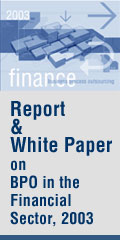|
|
External Commercial Borrowings Policy - Liberalisation- October 2008
October 22, 2008:
Based on a review, Reserve Bank of India has decided to modify some aspects of the ECB policy as indicated below:
2. Henceforth, ECB up to USD 500 million per borrower per financial year would be permitted for Rupee expenditure and / or foreign currency expenditure for permissible end - uses under the Automatic Route. Accordingly, the requirement of minimum average maturity period of seven years for ECB more than USD 100 million for Rupee capital expenditure by the borrowers in the infrastructure sector has been dispensed with.
3. In order to further develop the telecom sector in the country, payment for obtaining license/permit for 3G Spectrum will be considered an eligible end - use for the purpose of ECB.
4. At present, ECB proceeds are required to be parked overseas until actual requirement in India and such proceeds can be invested in the following liquid assets (a) deposits or certificate of deposit offered by banks rated not less than AA (-) by Standard and Poor / Fitch IBCA or Aa3 by Moody’s; (b) deposits with overseas branch of an AD bank in India; and (c) Treasury bills and other monetary instruments of one year maturity having minimum rating as indicated above.
It has now been decided that henceforth the borrowers will be extended the flexibility to either keep these funds off-shore as above or keep it with the overseas branches / subsidiaries of Indian banks abroad or to remit these funds to India for credit to their Rupee accounts with AD Category I banks in India, pending utilisation for permissible end-uses. However, as hitherto, the rupee funds will not be permitted to be used for investment in capital markets, real estate or for inter-corporate lending.
5. In view of the tight liquidity conditions in the International financial markets, it has been decided to rationalize and enhance the all-in-cost ceilings as under:
Average Maturity Period All-in-Cost ceilings over 6 Months LIBOR*
Three years and up to five years
Existing 200 bps
Revised 300 bps
More than five years and up to seven years
Existing 350 bps
Revised 500 bps
More than seven years (no change)
450 bps
* for the respective currency of borrowing or applicable benchmark.
The all-in-cost ceilings will be reviewed from time to time depending on the conditions in the international financial markets.
6. Keeping in view the risks associated with unhedged foreign exchange exposures of SMEs, a system of monitoring such unhedged exposures by the banks on a regular basis is being put in place.
7. The amendments to the ECB guidelines will come into force with immediate effect. All other aspects of ECB policy such as USD 500 million limit per company per financial year under the Automatic Route, eligible borrower, recognised lender, end-use, average maturity period, prepayment, refinancing of existing ECB and reporting arrangements remain unchanged.
ECB Guidelines revision in September 2008 ...Click here
ECB Guidelines revision in July 2008 ...Click here
Borrowers in services sectors eligible to avail ECB ...Click here
Special section on External Commercial Borrowings ...Click here
CLICK FOR MORE FEATURES & STORIES

|
|


|